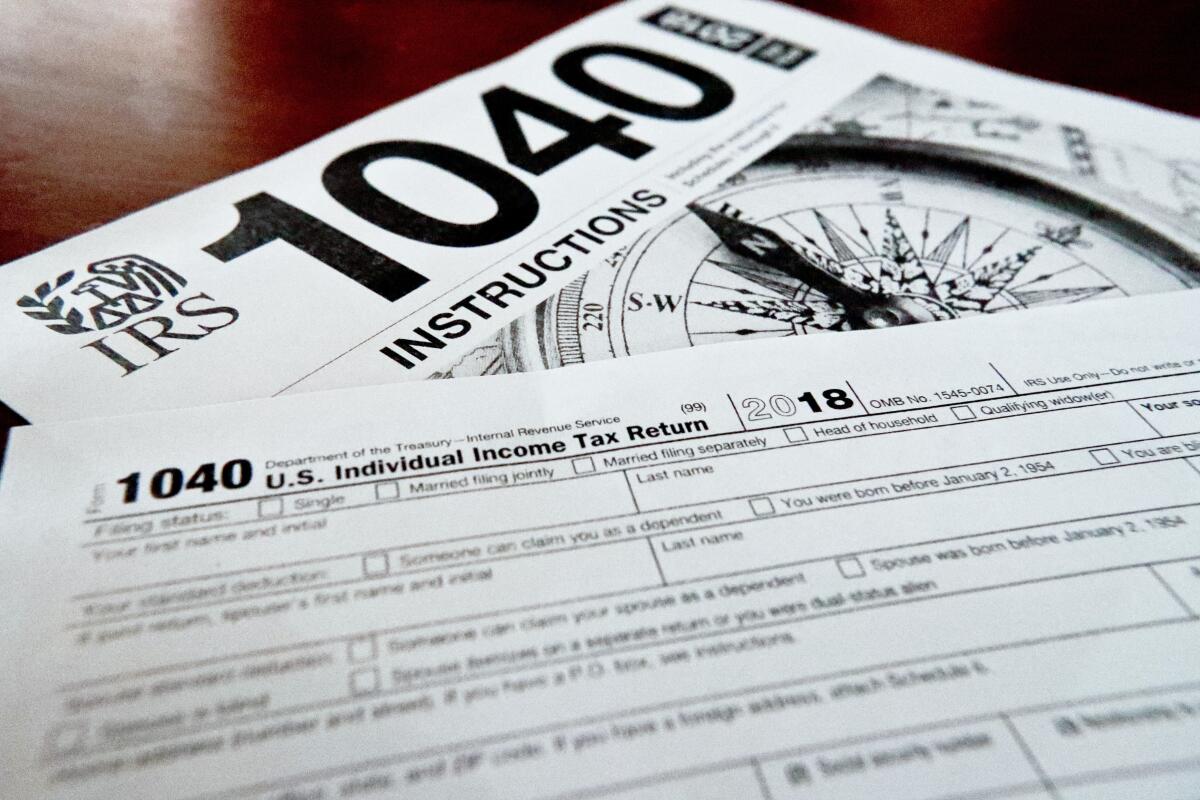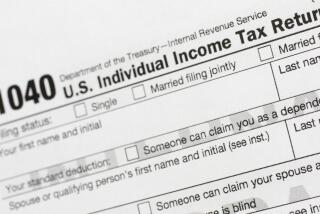New year, new way to file your tax return for free: The IRS launches Direct File pilot program

Itâs back to regular IRS deadlines for California taxpayers this year, but with a new tool for many low- and moderate-income households: a service that will prepare and file their tax returns online for free.
Starting later this year, taxpayers in California, Arizona, Nevada and nine other states will have access to a new program from the IRS called Direct File. Unlike the free filing options the IRS provides through third parties or the free services from TurboTax and H&R Block, Direct File enables you to send sensitive financial information directly to the IRS â no middleman required.
Itâs also the first service from the agency itself that guides you through the process of filling out your return. And its chat feature can provide answers to basic tax questions in real time from IRS customer service representatives.
Thereâs a catch, however. Although Direct File is available to California taxpayers regardless of how much they earn, it can be used only by people who earn income in limited types of ways. For example, Direct File is not for you if you have income from a business you own, subcontracting work or gig-economy jobs.
Regardless of how you do your taxes, you wonât have an automatic extension of the deadline for filing your 2023 return â at least not yet.
Because of the damage caused by winter storms last year, most taxpayers in California had until mid-November to complete their 2022 returns and pay what they owed. There have been no federal disaster declarations in California thus far, so the deadline for filing your federal and state returns for 2023 remains April 15.
If youâre entitled to a refund, tax experts say, you should file your return as soon as possible. Otherwise, youâre just lending interest-free money to the federal government.
Hereâs what you need to know about Direct File.
Congress may be on the verge of doing something big: passing a bill to bring back a smaller version of pandemic-era expanded tax credits. They could lift half a million kids out of poverty by next year.
Who will have access to Direct File?
The IRS is rolling out the program slowly to try to work out the kinks before releasing it to the general public. In addition to limiting access to taxpayers in 12 states â California, Arizona, Nevada, Washington, Florida, Massachusetts, New Hampshire, New York, South Dakota, Tennessee, Texas and Wyoming â it will make Direct File available at its Monday launch only to people whoâve been invited to test the system.
âUsing a phased approach like this means that the pilot will not be available to all eligible taxpayers immediately when the IRS begins accepting federal tax returnsâ on Monday, the agency said on its website. According to the San Francisco Chronicle, the agency expects to open the program to more taxpayers by mid-March.
Youâll be able to sign up on the IRSâ Direct File site for an alert telling you when the program is available to you.
Who can use Direct File?
The program will work only for taxpayers whose income is limited to wages reported on a W-2, retirement benefits from Social Security or the Railroad Retirement Board, unemployment benefits or interest income of $1,500 or less. That means if youâre a self-employed person, a business owner or a contractor, or if you have income from a partnership or trust, Direct File isnât for you.
Direct File also allows you to claim only a truncated list of credits and deductions: the Earned Income Tax Credit for low-income workers, the credits for children and other dependents, the standard deduction, and the deductions for student loan interest payments and educatorsâ classroom and professional development expenses. If youâre able to claim other credits and deductions, such as those for foreign taxes paid, child care or retirement savings, or if you cut your tax bill by itemizing deductions (for example, if you have sizable medical expenses), Direct File would not be a good choice.
The forms and chat help are available in English and Spanish.
Information that investigators have still not released â the age of the dead and their criminal history, for example â would help give a better idea of a possible motive to the killings, experts say.
How do you use Direct File?
The program runs online only; youâll need a smartphone, tablet or computer to access it. And to get started, youâll need to prove to the IRS that you are who you say you are.
The only way to do that this year will be to use the identity verification service ID.me, which takes a scan of your government-issued picture ID, such as your driverâs license or passport, then uses facial-recognition software to match your image from a live chat session or a new selfie against the stored photo. ID.me has raised concerns among some critics, who say it poses too great a threat to privacy and security.
Once youâve established your identity, the program will check your eligibility, then guide you as you enter information about your income, credits and deductions. You donât need to download any software, the IRS said; instead, your entries will be saved online, and youâll be able to pause and resume later without having to start over.
The programâs question-and-answer approach means you wonât have to know which forms to fill out or where on the forms to enter your information. Instead, the program will handle those details for you. That sort of virtual hand-holding is similar to what youâd get by using commercial tax preparation software.
Can you fill out your California tax return through Direct File?
No, the information you enter through Direct File will not flow automatically onto your state tax forms â California is not one of the handful of states that have enabled it. Instead, the state Franchise Tax Board offers CalFile, as a way for qualified taxpayers to file their returns for free online. The restrictions on participating in CalFile are similar to those in Direct File, so if youâre eligible for the latter, youâre probably able to use the former.
Despite complaints over the reliability of EV chargers, California regulators have approved Electrify Americaâs latest plan to expand charging infrastructure.
What are the alternatives for filing your tax return for free?
The IRS already offers its Free File service to taxpayers whose adjusted gross income â that is, income minus certain deductions, including retirement savings contributions and student loan interest payments â was $79,000 or less in 2023. Unlike Direct File, taxpayers with earnings from self-employment, their own businesses, investments or gig work are eligible, as long as they meet the income limits.
There is a version of Free File that lets you fill out forms directly online, with no guidance from the IRS. The more accessible version, though, connects you to any of eight online tax-preparation services, which will help you prepare your return for free.
In addition, the AARP Foundation Tax-Aide and the IRS-sponsored Volunteer Income Tax Assistance program can connect you to a volunteer tax preparer who will do your tax return for you or help you do it yourself, at no charge to you. These services provide tax preparation or guidance only to low- and moderate-income taxpayers who meet the income limits, or who have disabilities or limited English proficiency.
Intuitâs TurboTax and H&R Block also make free versions of their tax preparation and filing software available online. Thereâs no income limit, but the services work only with basic returns that demand little more than a 1040 form. That would exclude anyone with income or losses from a small business, for example, or whose investments pay more than $1,500 in dividends.
More to Read
Inside the business of entertainment
The Wide Shot brings you news, analysis and insights on everything from streaming wars to production â and what it all means for the future.
You may occasionally receive promotional content from the Los Angeles Times.














